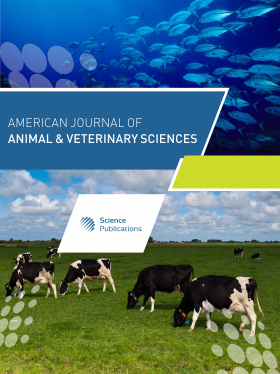Morphological Study and Dairy Productivity of Camelus bactrianus in Eurasia
- 1 Department Animal Husbandry, Veterinary Medicine and Assessment of the Quality of Feed and Milk, Research and Production Center for Animal Husbandry and Veterinary Medicine, Limited Liability Partnership, Astana, Kazakhstan
- 2 Laboratory of Breeding and Biotechnology "Institute of Biology and Biotechnology" of the Science Committee of the Ministry of Science and Higher Education of the Republic of Kazakhstan, 45 Timiryazev Street, Almaty, Kazakhstan
- 3 Department of Technology of Production and Processing of Agricultural Products, Tuva State University, 36, Lenin Street, Kyzyl, Republic of Tyva, Russia
- 4 Department of Private Animal Science, Russian State Agrarian University-Moscow Timiryazev Agricultural Academy, Moscow, Russia
- 5 Zhambyl Branch of the Kazakh Scientific Research Veterinary Institute, 87 Abai Avenue, Taraz, Kazakhstan
Abstract
In Eurasia, a common species of camel is the double-humped (Camelus bactrianus), which has not been studied in detail so far on morphological features of the exterior and dairy productivity. The research was carried out in Alakol-Agro LLP in the Alakol district, the Zhetysu region of the Republic of Kazakhstan, and the Republic of Tyva of the Russian Federation. The object of the research was the breeding stock of camels of purebred Kazakh Bactrian and Mongolian Bactrian of the Tuvan population. The formation of experimental groups of female camels of the Kazakh Bactrian of the Kyzylorda and South Kazakhstan type, as well as Mongolian Bactrian, was carried out according to origin and typicality. The purpose of the study is to study the morphological parameters and milk productivity of Camelus bactrianus in Eurasia. The coefficient of reproductive ability in Camelus bactrianus camelids varies from 0.49-0.51. Full-aged Camelus bactrianus camelids have an average live weight of 495.7, 615.6, and 695.1 kg. The height between the humps of Camelus bactrianus is 163.5, 175.7, and 184.6 cm. The oblique body length of camelids was 149.3, 162.9, and 164.8 cm. The chest circumference ranged from 223.7-243.8 cm. The girth of the pastern ranged from 20.9-21.4 cm in camelids. The examined camels corresponded to the elite + I class. The highest milk yield for 275 days of lactation is characterized by camels of the Kazakh Bactrian breed of the South Kazakhstan type (1732.5 kg), in comparison with the peers of the Kazakh Bactrian of the Kyzylorda type (1408.6 kg) and the Mongolian bactrian of the Tuvan population (1154.8 kg). The rate of breast transfer varied from 0.95-1.52 kg/min. The lactation index was 97.0-162.8 kg. The caloric and energy value of 100 g of Camelus bactrianus camel milk ranged from 78.3 kcal or 2249.1-87.0 kcal or 2515.6 kJ.
DOI: https://doi.org/10.3844/ajavsp.2025.1.7

- 2,927 Views
- 1,289 Downloads
- 0 Citations
Download
Keywords
- Body Measurements
- Morphological Features
- Camels
- Camelus bactrianus
- Live Weight
- Milk Biochemistry
- Milk Production
